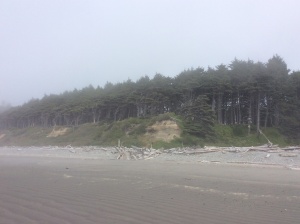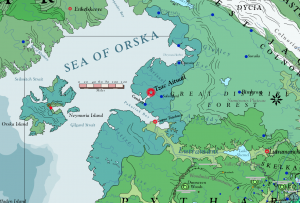Maritime Northwestern Pytharnia
The northwestern coastlines of the continent of Pytharniaca are tempered by relatively warm currents of water from the south that bring warm air up the Pytharnian Sea. This region of Pytharnia is largely wild with Tuadbe settlements on the coast. It is known for its great sequoia and redwood trees and nomadic humanlike tribes, such as the beastfolk. The great Lutramani River which forms from the confluence of the Basthavuda and the Kasthavuna Rivers drains in the Pakutiak Bay of this region. While uncommon, elves are seen less infrequently in the towns and woodlands of this region than in southern Pytharnia. More civilized members of the beastfolk and often Kemerite Giants visit the coastal towns as well. The inland wilds of the region are not organized and the coastal towns form the strongest governments. The most populous members of the coastal towns are Tuadbe, including Azerukese, followed by people of Moigthe and Colnorian heritage. The economy is largely subsistence with hunting, fishing, and some farming being most common. Timbering is limited by tribal customs and occasional interventions from the elves.
The climate is very cool in the winter with light snows and very mild summers. The climate of the nearby island, Orska, is very similar. Most rainfall is in the winter and spring with occasional drizzles in late summer and autumn.
The primary prey of human and some humanlike hunters consist of boar, deer, and elk. Salmon, cod, haddock, halibut, mackerel, herring, tuna, and many others are typical of the fisherman's catch. Coastal islets are known for their flocks of puffins and other sea birds.
See Also
| This article is a stub. It requires further development by the creator. |

